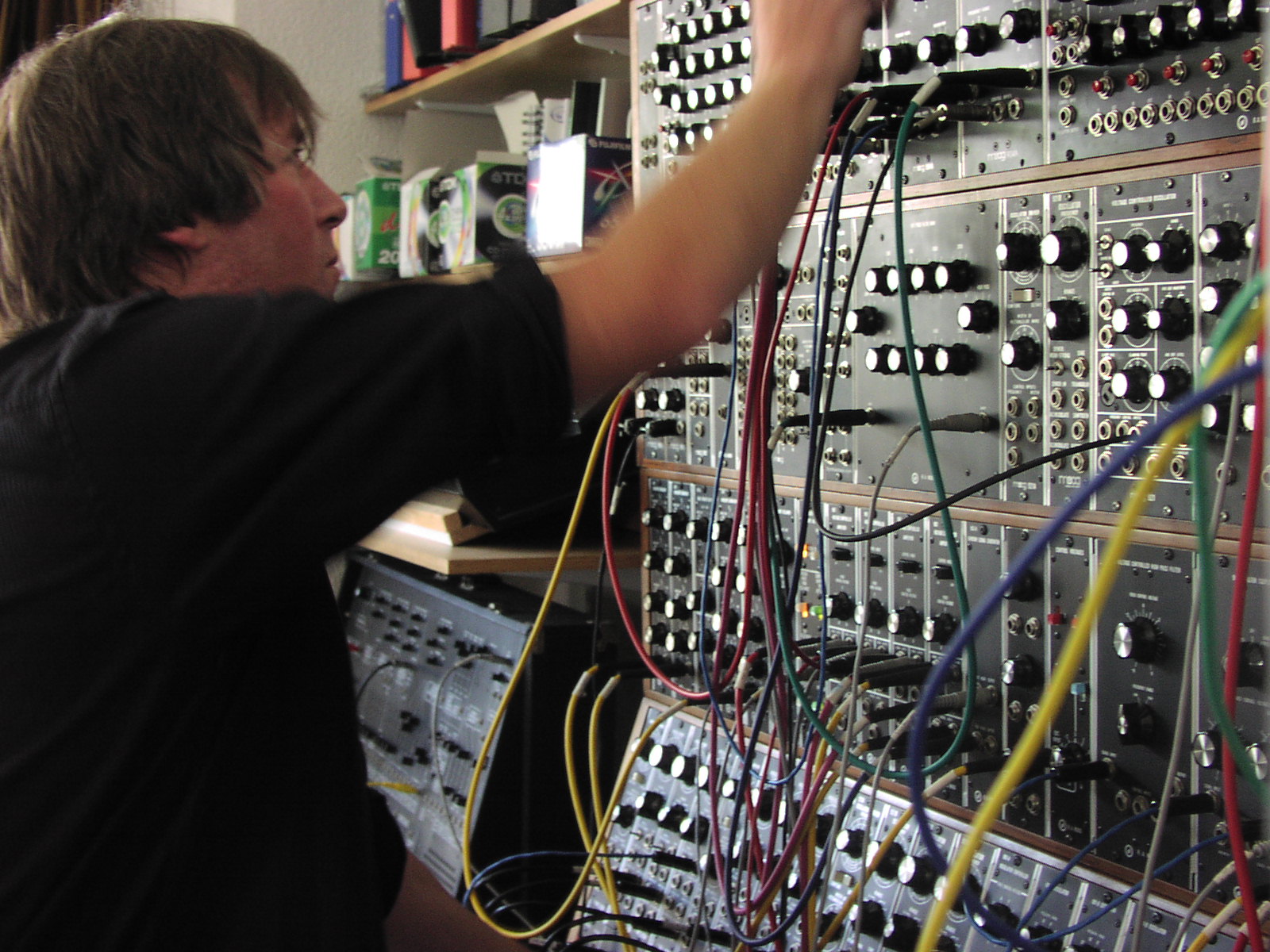Podcast: Play in new window | Download
Subscribe: RSS
Echoes celebrates Moog synthesizer inventor Robert Moog‘s 75th Birthday
You can hear an audio version of this blog with music here.
In the front room of his London home, Mark Shreeve of the English space band, Redshift and Arc, has a massive modular Moog system full of patch cords and blinking lights. Shreeve is from a generation who grew up on the sounds of the Moog.
Mark Shreeve & Mighty Moog
Mark Shreeve: I mean nothing sounds like that big Moog. Nothing in the synthesizer world can put out bass like that machine can, I mean it’s a real pain to use, it’s a pain to maintain, it’s difficult to operate, it’s always going out of tune, but in the end it’s driven by the sound.
Robert Moog created the Moog synthesizer nearly 45 years ago. When the inventor died in 2005, the press coverage would have had you thinking his creation was an instrument of the past, trapped in cheesy pop songs and classical recreations. But as we celebrate Moog’s 75 birthday on May 23, his instruments and the sounds they made have never been more widely embraced. Among a generation that wasn’t even born when Switched-On Bach was released, the Moog is cherished. Jimmy Lavalle of the ambient rock band, The Album Leaf, started using the Moog Voyager, an updated mini-moog, after recording a tune for the Moog documentary film.
JIMMY LAVALLE: I didn’t even own one when I did that. I’d always like in whatever studio wherever I recorded I always used one. No matter what. Just, just, there’s that sound that I need in my, you know, in my songs and that’s basically how it was.
German synthesist Klaus Schulze, Jimmy Lavalle’s elder by two generations, discovered that three decades ago. Despite being a new technology junkie, the Moog remains part of his electronic arsenal.
Klaus Schulze: “I have a personal thing with the Mini-Moog for example. For me it sounds for me like a violin in terms of synthesizers. I can close my eyes and turn the knobs and play the key and get exactly the sound I wanted without even looking at it, you know?
Roger O’Donnell, former keyboardist with The Cure, records his music exclusively on the Moog voyager, and his sentiments are echoed by many Moog devotees.
Roger O’Donnell: They’d given me a voice, something I really felt represented me, my personality and my emotion and that I’m so comfortable controlling it, being able to mold it and make it my own.
Robert Moog would have turned 75 on May 23 and his invention changed our musical vocabulary. I’ll have a celebration of Robert Moog Thursday night on Echoes with Wendy Carlos, Klaus Schulze, Jan Hammer and more. This has been an Echo Location, Soundings for New Music.
You can hear an audio version of this blog with music here.
I’ve also got a list of 10 Essential Moog CDs .
John Diliberto ((( echoes )))


I experienced my first Moog Modular Series I at Indiana University at South Bend’s Electronic Music Lab in 1975 at 14 years old. My 5th grade music teacher also taught electronic music there. This was after drooling over Moog brochures and not being able to swing the cost of getting one at that early age. I instead built a PAIA modular, but continued to go to IUSB electronic music lab for recitals and occasional chances to play with the instruments. I did my first recordings with my modular PAIA as sound on sound with a Wollensak reel to reel, covering the erase head with cellophane and building tracks. I received my first MiniMoog as a gift from a roomate in 1983. I am still using MOOG products and the Arturia Moog Modular software now. The sound is infectious as was the man himself, Robert Moog. I am blessed to have known him.
Wollensak! Hey, Tony, I learned how to edit tape on a Wollensak. It wasn’t radio, though, I was a student research assistant in the biology dept. at the University of Pennsylvania, recording and editing zebra finch songs.
I saw/heard the behemoth Moog 1 in 1970 at an Emerson, Lake, & Palmer concert, their Tarkus tour. My first personal Moog experience was in 1973, when I talked my high school drama teacher into renting a Mini-Moog for me to create the soundtrack to a film the drama class was making. Being a woodwind player, I went on to purchase a Lyricon II in ’78 (which used Aries oscillators and filters). Bob Moog’s vision and innovation truly opened doors for my imagination.